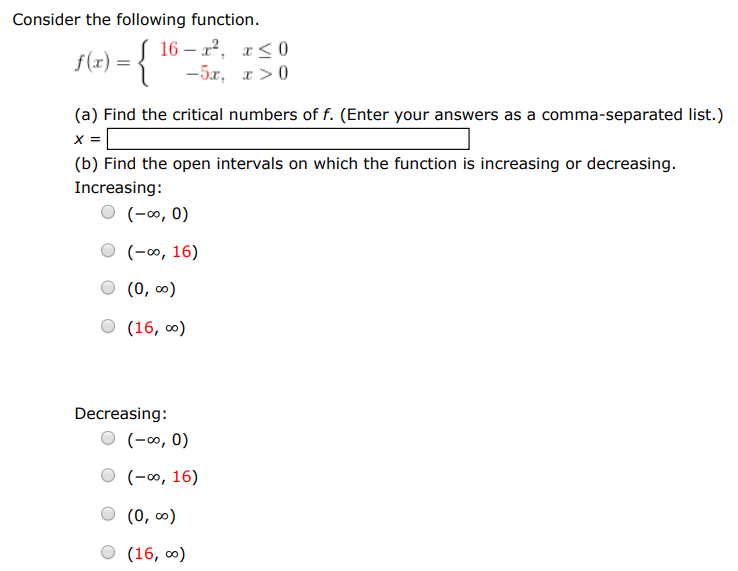Consider the following function. f(x) = {16 − x2, x ≤ 0 −5x, x > 0 (a) Find the critical numbers of f. (Enter your answers as a comma-separated list.) x = (b) Find the open intervals on which the function is increasing or decreasing. Increasing: (−∞, 0) (−∞, 16) (0, ∞) (16, ∞) Decreasing: (−∞, 0) (−∞, 16) (0, ∞) (16, ∞) (c) Apply the First Derivative Test to identify the relative extremum. (If an answer does not exist, enter DNE.) relative maximum (x, y) = ( ) relative minimum (x, y) = ( ) (d) Use a graphing utility to confirm your results.

